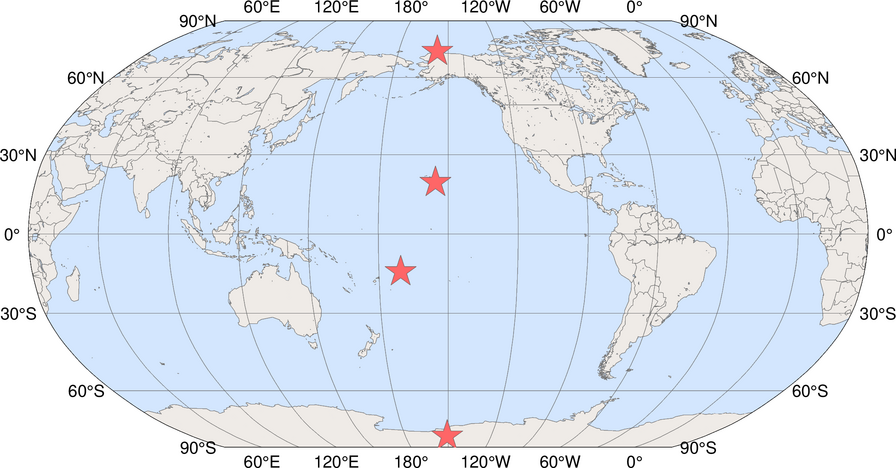The Mauna Loa Observatory (MLO) is an atmospheric baseline station of the Global Monitoring Laboratory (GML), of the National Oceanic and Atmospheric Administration (NOAA). The mission of ESRL is to measure atmospheric constituents that are capable of forcing change in the climate of the earth and those that may deplete the ozone layer. ESRL accomplishes this goal primarily through long-term tropospheric measurements of key atmospheric parameters such as carbon dioxide (CO2), carbon monoxide (CO), methane (CH4), chlorofluorocarbons (CFCs), ozone (O3), sulfur dioxide (SO2), nitrous oxide (N2O), radon, aerosols, optical depth, and a spectrum of solar radiation parameters.
MLO is located on the north flank of Mauna Loa Volcano, on the Big Island of Hawaii. Due to its remote location in the Pacific Ocean, high altitude (3397 meters, or 11,135 feet above sea level), and great distance from major pollution sources, MLO is a prime spot for sampling the Earth’s background air in the well mixed free troposphere. The observatory protrudes through the strong marine temperature inversion layer present in the region, which separates the more polluted lower portions of the atmosphere from the much cleaner free troposphere. More on MLO Site Location…
MLO began continuously monitoring and collecting data related to climate change, atmospheric composition, and air quality in the 1950’s. Today, the observatory is best known for its measurements of rising anthropogenic carbon dioxide (CO2) concentrations in the atmosphere. This trend is sometimes referred to as the “Keeling Curve”. MLO is also known for its measurements of ozone, chemicals that destroy ozone (such as CFCs and HCFCs), solar radiation, and both tropospheric and stratospheric aerosols. Data from MLO is also used to calibrate and verify data from satellites and stations around the world. More on MLO Programs…
The Observatory at Mauna Loa has been a model for several recently instituted atmospheric research stations. In its 50 years of operation, MLO has supported hundreds of cooperative research programs with national and international universities, government organizations, and foreign agencies. Hundreds of papers have been published based on data collected at MLO. More on MLO Programs…
Mauna Loa Observatory is also affiliated with the Research Corporation of the University of Hawaii (RCUH), School of Ocean and Earth Science and Technology (SOEST), Joint Institute for Marine and Atmospheric Research (JIMAR). Several MLO employees work for JIMAR (more about MLO Staff…).
MLO is also a primary observing site for the Network for the Detection of Atmospheric Composition Change (NDACC). The NDACC is a set of high-quality remote-sounding research stations for observing and understanding the physical and chemical state of the stratosphere. Ozone and key ozone-related chemical compounds and parameters are targeted for measurement. The NDACC is a major component of the international upper atmosphere research effort and has been endorsed by national and international scientific agencies, including the International Ozone Commission, the United Nations Environment Programme (UNEP), and the World Meteorological Organization (WMO).



